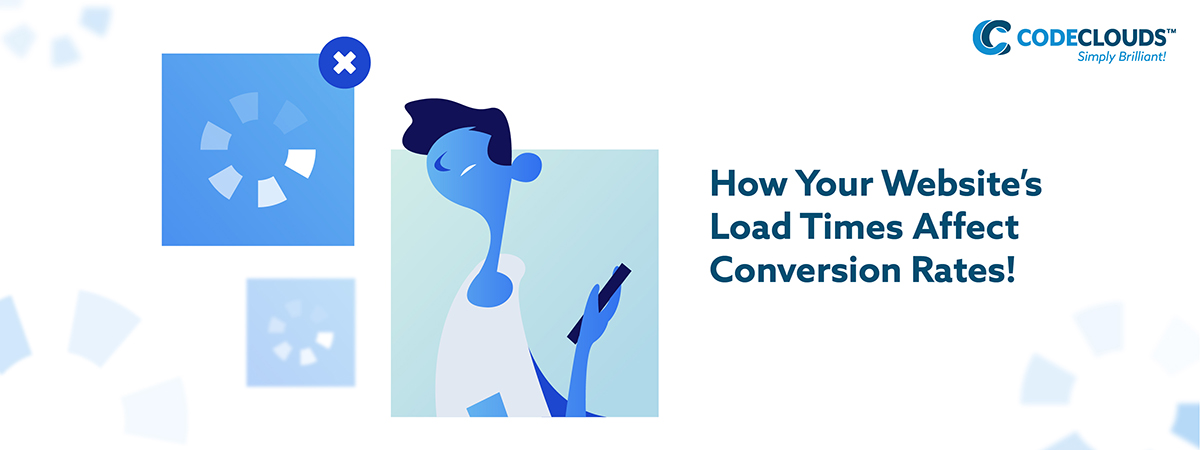Overview
Just how much are load times hurting your business? What can you do about them? We discuss some statistics from the infamous Google report, and some solutions to help get your page up to speed.

It’s been two years since Google’s 2017 report on industry benchmarks, and we all know the damage: 53% of customers abandon a web page that hasn’t loaded in three seconds, almost no customers remain after 10 seconds, and the average mobile load time was a staggering 22 seconds. We’ve come a long way in two short years, with the average load time in 2018 being 15 seconds, and 2019 shaping up to be somewhere around 12.
That’s not the full picture, of course: when they calculate ‘average time’ they mean when the page is fully loaded: there’s a lot of packets that will make their way onto your screen later than expected, when the main content is fully-visible; many users will start interacting with your site when the content above the fold is ‘good enough’. Still, it’s no surprise that these numbers shook the industry. If you don’t pay attention to how fast your site loads, then you are losing clients, losing clickthroughs, losing conversions. God forbid you haven’t updated your site since 2017, which may as well be an aeon ago.

When you have a slow load time, your revenue now gets hit from two directions: users will bounce, and Google will push you into a corner where nobody can see you. How much is that going to hurt? Let’s talk numbers:
- 53% of users bounce if the page hasn’t loaded within 3 seconds. This increases exponentially with each passing second from thereon out.
- Going from a 1 second load time to 7 seconds, there’s a 113% increase in abandonment (more than double) if the page hasn’t loaded yet.
- Almost no users will remain on a page that takes 10 or more seconds to load above the fold.
- The average mobile page load time in 2019? 11 seconds.
- The top organic result of a Google search gets approximately 33% of all clickthroughs. The second gets 15%, the third gets 9%. The first page of results, all up, get about 75% of all clickthroughs. PageRank is a critically important factor in your business success, and you cannot afford to jeopardize it with slow load times.
- If the number of elements onscreen exceeds 6000, your conversion rate drops by 95%. 6000 sounds like a lot, but in practice it’s not as much as you would think: these things add up very quickly.
If your page takes more than 10 seconds to load above the fold, less people will click on the page’s links, and over half of those who do will leave before the next content loads. This leads to an overall drop in conversions, and a loss of revenue. We’re barely even talking about lost conversions at that point; can you call it a lost conversion if they never even loaded your site in the first place? And yet, only 3% of companies surveyed by Unbounce thought it was their biggest issue, while 33% focused on A/B testing. There’s a huge hole in the boat, but the captain’s #1 concern is figuring out how his sandwiches got soggy.

So what can you do about it?
- If you have the budget and developer access, consider creating AMP pages for your site. AMP can be difficult to implement, but can reduce load times by up to 85%.
- Use Google’s site speed tools to figure out which parts of your pages are gumming up the works.
- If you’re not using AMP (which requires inline CSS/JS), make sure your CSS and JS have their own pages in the directory – this will make them easier to cache, so your regular customers can load them in a heartbeat.
- Reduce the number of elements on your site: that cool animated background that swings around as the user interacts with the site? It’s beautiful, but it’s killing you.
- Make sure images are the correct size. This is a hidden factor that a lot of folks miss: the image on the page is 400×300, but it’s linked to a mammoth 4000×3000 file somewhere and that’s a lot of overhead that’s getting you nothing. This is a simple change that can slash load times right down.
- Check out our handy optimization guide for more detail.
The word you want ringing in your head every day is elegance — you want a site that uses a little to do a lot. There’s an old editors’ rule: figure out how much you want, then cut 30%. It’s an approach that forces you to make hard decisions about the things you want versus the things you need. If you’re not considering your site design through this lens, you are hurting your bottom line. That animated background? It’s worth less than nothing if nobody ever gets to see it.

If you’re looking for somebody to help you out with mobile development and optimization, it couldn’t hurt to talk to CodeClouds. Our offshore development teams are reasonably-priced and reliable, and can help you to AMPlify your mobile pages and cut your load times right down. Get in touch with us today and find out how CodeClouds can help you.
Share this article
434 reads
Similar Reads








